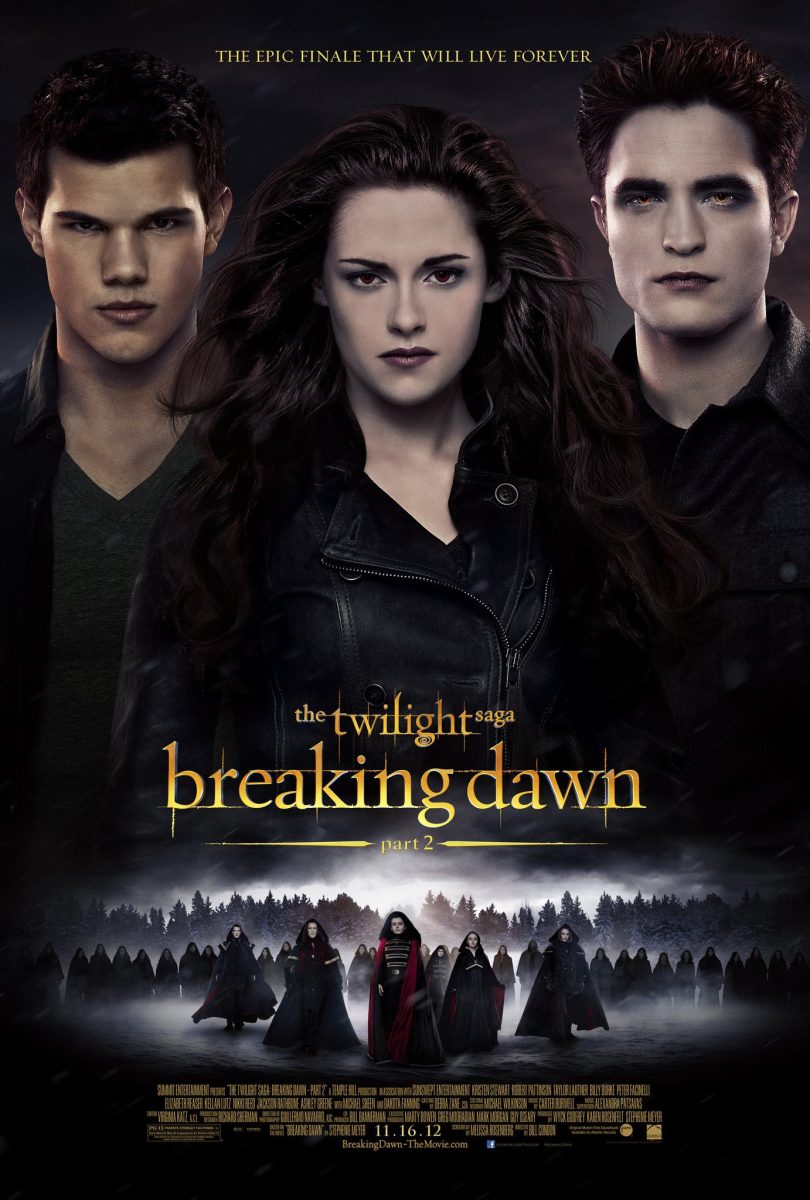This essay contains spoilers for the Twilight Saga’s Breaking Dawn: Part 2.
With all the competition that comes with working in the media sphere, it’s no wonder that many creative companies are turning to tried-and-true works of literature to create what they hope will be successful television or movie franchises.
Though the formula and premise seem simple – capture the attention of die-hard fans while hooking in new viewers in a race for profits, a new problematic trope in filmmaking has started to develop: the invention of the two-part finale, which first started hitting its stride when the Harry Potter movies split “Harry Potter and the Deathly Hallows” in 2011.
After that, the Twilight franchise’s “Breaking Dawn: Part 1” and “Breaking Dawn: Part 2” quickly followed, in addition to other popular adaptations of beloved novels, including “The Hobbit” and its three-part trilogy along with the Hunger Games’ two-part finale of “Mockingjay.” In a similar, but slightly different vein, Marvel also turned the culmination of the Avengers franchise into two parts — “Avengers: Infinity War” and “Avengers: Endgame.”
There is no denying that this tactic has been enormously profitable. For example, the “Harry Potter and the Deathly Hallows” movies earned about $2.2 billion across parts one and two; comparatively, the previous movie in the series, “Harry Potter and the Half-Blood Prince,” earned $934 million on its own (Box Office Mojo).
It’s no surprise, then, that studios are generally in favor of splitting the final book during its transition to the big screen. This move grants the stars more publicity and the organizations more box office revenue, while audience members get the chance to return for even more batches of buttered popcorn.
While the ambience of the theater is not something to be overlooked, the plot and pacing of the individual movies suffer from the extended time granted to them.
A major theme of these two-part sagas is a struggle to balance fast-paced action with character building moments which leaves the first half of the two movies slogging through overly detailed, tedious foundational plot points while the second is forced to stretch out the most climatic moment for hours on end, to the point where even the action feels uneventful.
“Breaking Dawn: Part 2” is perhaps one of the most obvious examples of the struggle to fill time. The film showcases a dramatic show-off between the Cullen family, the werewolves and the Volturi, only to reveal 10 minutes later that every moment of the conflict was part of a vision of the future, rather than occurring in the present – a twist that was completely absent in “Breaking Dawn,” the novel.
Similarly, the movie version of “The Hobbit,” a book that spans approximately 300 pages, was forced to rope in characters from the original “Lord of the Rings” trilogy to have enough engaging hooks for audience members to pay attention to. Even with added characters, like Orlando Bloom’s Legolas and a love triangle between a dwarf and an elf which didn’t exist in any source material from J.R.R. Tolkien, the final movie in the “The Hobbit” series still largely consists of two and a half hours of interchangeable fight scenes.
The result of these divided franchises becomes increasingly clearer as time goes on, and a strategy that is meant to allow the finale to feel fleshed-out and detailed ends up making two or more movies that struggle to tie themselves together. Because of the sheer amount of time granted by having multiple movie “slots” for these series finales, the filmmakers are forced to turn to attention-grabbing gimmicks that cheapen the story.
Is there a solution?
You’ll have to find out in part two…







